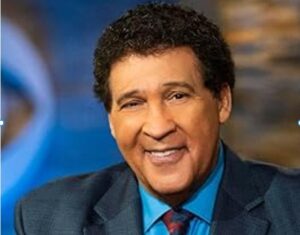TRAVIS BAZZANA, AUSSIE BASEBALL

TRAVIS BAZZANA FROM DOWN UNDER IS DOING A WONDERFUL JOB IN BASEBALL.
By Ray Nickson, Senior Lecturer in Criminology
Newcastle Law School, University of Newcastle
Earlier this month, Travis Bazzana made history as the first Australian selected number one in the Major League Baseball (MLB) draft. Bazzana will join the Cleveland Guardians after playing college baseball for Oregon State.
Following his selection, Bazzana, originally from Wahroonga, NSW, said he wanted to help “make Australia a powerhouse in baseball”. Baseball NSW was quick to predict Bazzana’s achievement would “have a significant impact” on the popularity and growth of baseball in Australia.
Almost 100 years ago, baseball figures in Australia made similar claims, only to be undone by theft and fraud.
The crimes of a baseball official setback the growth of baseball in Australia.
Baseball’s long history in Australia
While baseball has a long history in Australia – the first recorded game was in Melbourne in 1855 – it has always been a niche sport here.
In 1888, sporting goods businessman Albert Goodwill Spalding included Australia in his world baseball tour.
Later, the MLB teams the Chicago White Sox and New York Giants visited Australia during their 1913-1914 world tour.
While Australians were intrigued, press coverage suggested a suspicion that baseball might challenge cricket for popularity and by the 1920s, cricket had established its position as Australia’s preeminent sport.
However, Australia’s press and public was willing to accept baseball as a novelty and winter sport for training summer cricketers.
In fact, cricketers’ participation in baseball as a winter sport was instrumental to the American game’s early success in Australia.
Australia’s baseball devotees worked tirelessly to promote the sport locally in the first quarter of the 20th century. It was in these circumstances that two tours of American amateur teams were arranged.
Stanford University made the first visit in 1928. Then in 1929, Portland’s respected Multnomah Amateur Athletic Club sent a team to Australia.
Both tours included fetes, parades, baseball tournaments and civic receptions, while local dignitaries celebrated the touring players.
Local businesses supported the tours, with motor vehicle manufacturer Studebaker offering a fleet of cars to take players on a motorcade procession through Sydney after arriving by ship.
Contemporary records show the tours generated immense interest in the sport. Participation in local baseball competitions boomed afterwards.
Australian baseball authorities made efforts to entice American coaches to Australia to develop the game locally.
Plans were made for future tours to capitalise on the growing interest in the sport.
One reason baseball failed to continue this growth was because the tours had been funded by criminal fraud.
The crime that set baseball back
Cecil J. Asprey was honorary secretary of the Australian Baseball Council and chairman of the executive of the New South Wales Baseball Association. He was instrumental in arranging the tours by Stanford University and Multnomah Amateur Athletics Club.
He was referenced in the press following the tours, noting Australian interest in baseball, and American interest in Australian baseball, had risen significantly.
When the tours lost money, it became apparent Asprey had funded them with money stolen from clients of the solicitors he worked for.
By May 1931, after unsuccessful attempts to arrange subsequent tours, it all unravelled for Asprey. He was first charged in the Central Police Court on May 7 1931, and immediately revealed the money had been used to fund the activities of the baseball association.
Asprey’s lawyer told the court “he has not received a single penny of the funds himself – that the whole of the money was definitely paid into the account of the association”.
Eventually, Asprey was charged with 21 counts of forgery, embezzlement and larceny.
The story of his crimes and its impact on baseball in Australia was made all the worse due to the vulnerability of his victims.
Asprey’s victims “were generally women, most of them widows”, some with limited English.
One victim, Rosina Melit, a migrant from Italy, told the court how Asprey took her money to discharge her mortgage. He never paid the mortgage off.
This was a crime Asprey committed against more than one victim. A detective-sergeant at Asprey’s trial noted he had “a happy knack of getting on the soft side of widows and a widower”.
Asprey told the court he had used everything he stole to bring over international baseball players.
“I know I have done wrong. I am willing to hand over everything I possess,” Asprey advised the court.
He was sentenced to five years’ hard labour. He left a wife and two children when he went to jail.
The tours Asprey organised generated enormous interest. While participation increased in the local leagues in the seasons that followed, that momentum was not maintained. This was in part because further tours never materialised.
Asprey was still trying to arrange future tours up until his arrest.
Had Asprey and baseball authorities in Australia been able to fund tours legitimately, it is very likely the popularity of the sport would have continued to grow.
What may the future hold?
Baseball has always had a devoted, though relatively small, following in Australia. Despite successes, including a silver medal at the 2004 Summer Olympics, it has remained a minor sport.
In the 2000s and 2010s, baseball participation either increased or decreased, depending on the source.
In 2022 Baseball Australia released a national plan to increase participation at all levels.
Baseball’s governing body in Australia also hoped the country’s success in the 2023 World Baseball Classic would drive interest in the sport.
Bazzana’s pick as number one in the MLB draft will certainly contribute to interest in “the old ball game,” as it is sometimes nicknamed, in Australia.
Whether that translates into increased participation remains to be seen.
We can only imagine how many more Bazzana’s Australia might have produced but for the crimes that derailed baseball’s growth in Australia.



